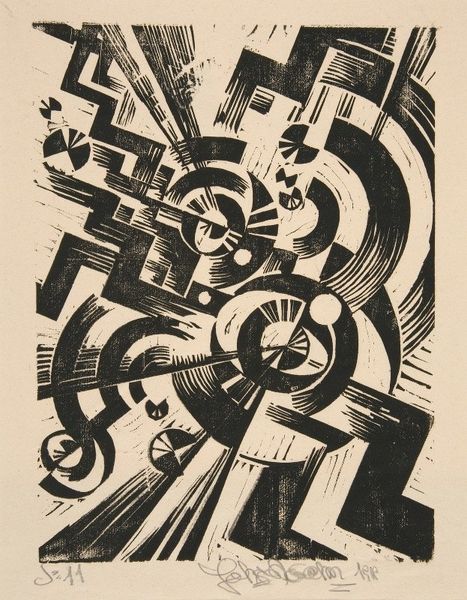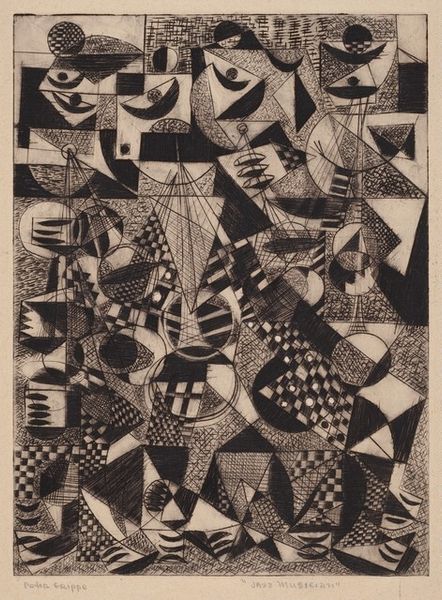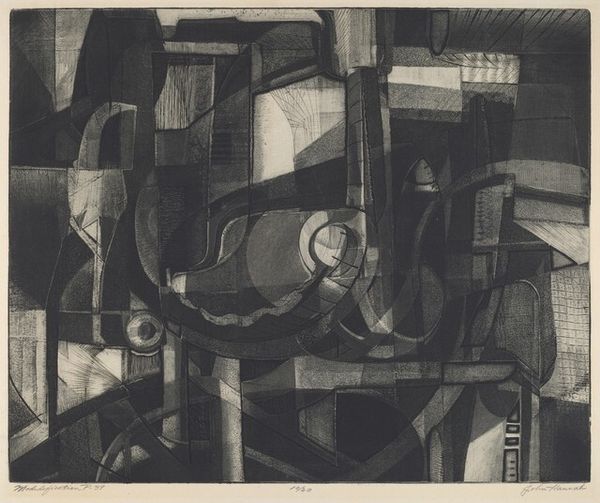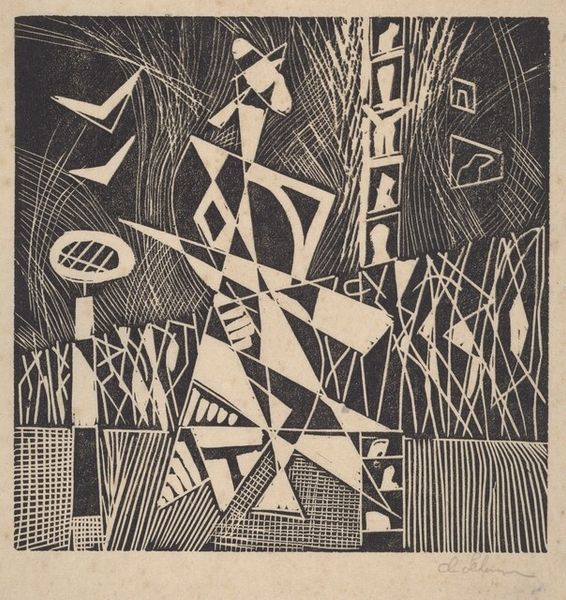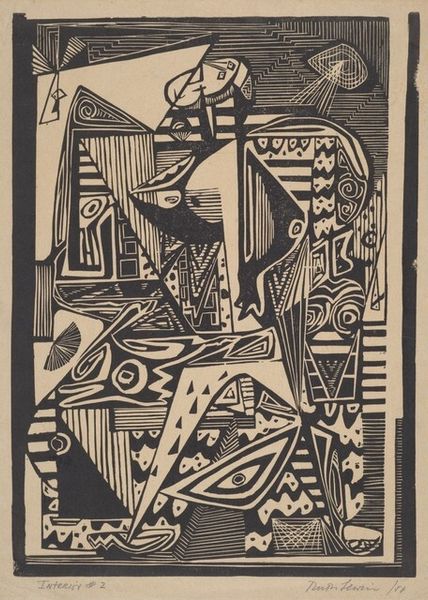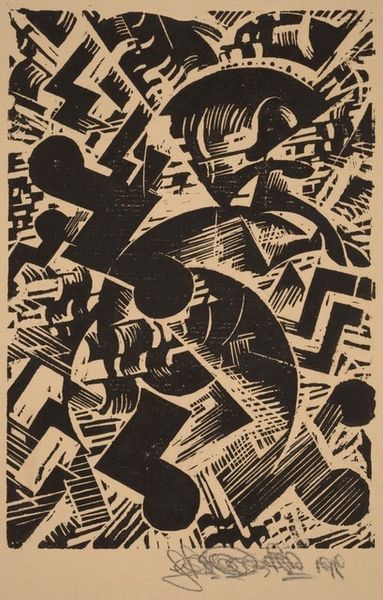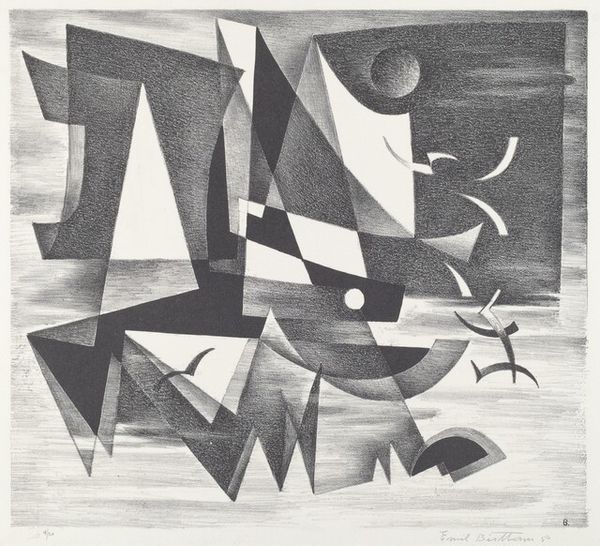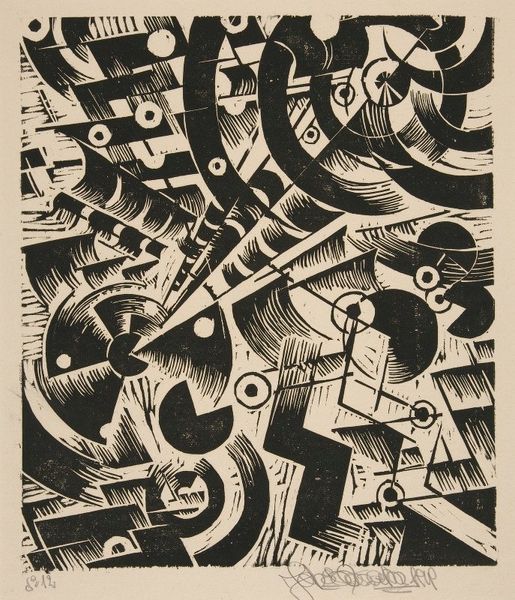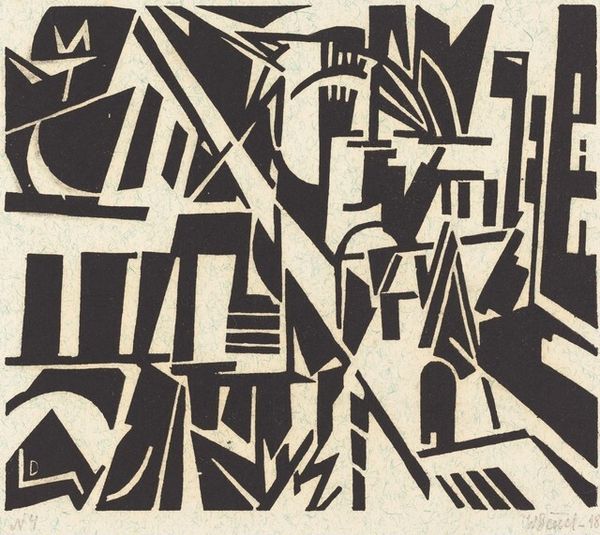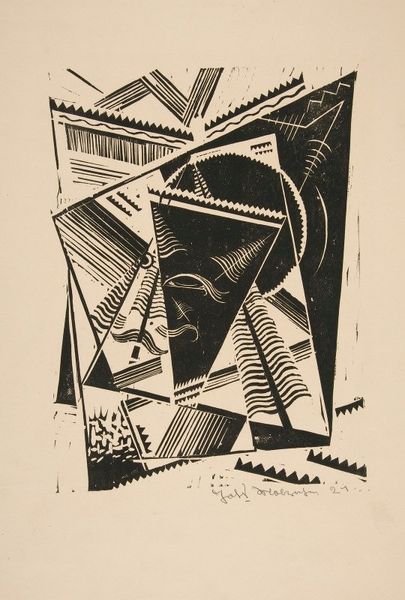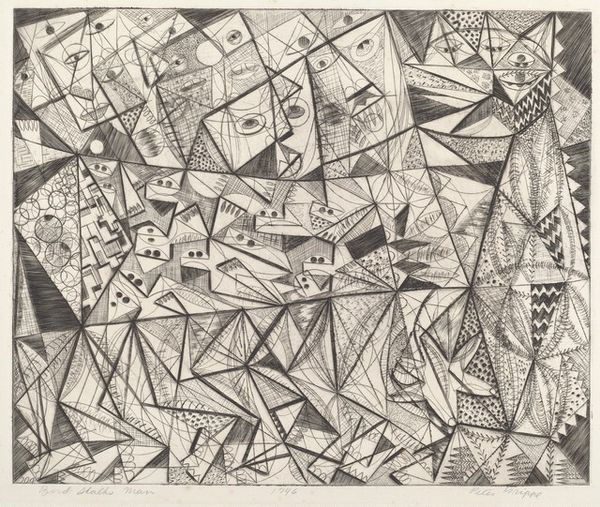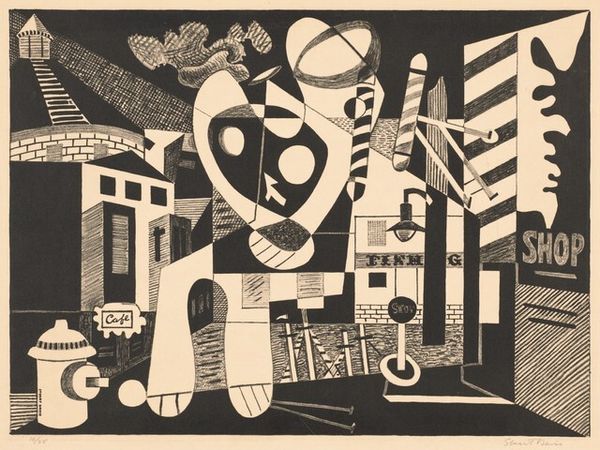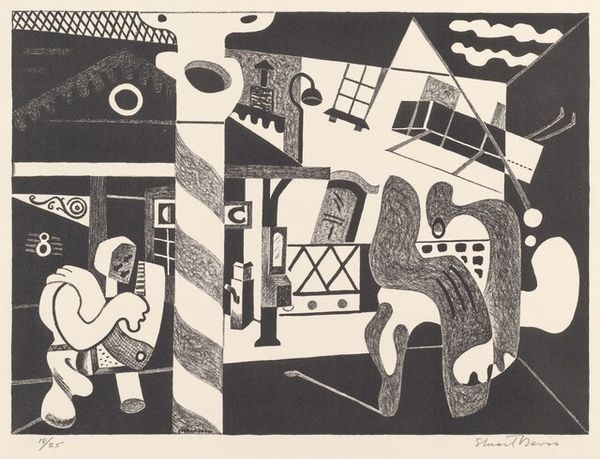
graphic-art, print, woodcut
#
graphic-art
# print
#
german-expressionism
#
abstract
#
form
#
geometric
#
expressionism
#
woodcut
#
line
#
modernism
Copyright: Public Domain: Artvee
Editor: We’re looking at Johannes Molzahn’s "Ride In," a woodcut print from 1920. It’s a flurry of geometric shapes, mostly in stark black and white. There's an energy in the way all these lines and forms seem to be pushing and pulling. It feels…mechanical and maybe a bit chaotic. What strikes you about this piece? Curator: It’s fascinating to consider this piece within the context of post-World War I Germany. Molzahn was part of the November Group, which aimed to connect artists with the revolutionary socialist movements of the time. How might this chaotic jumble of shapes reflect the social and political upheavals of the era? Editor: So, you're saying this visual cacophony could be a response to the turbulence of the time? All those colliding shapes... almost like society in disarray? Curator: Precisely. And the very act of creating a woodcut print aligns with that socialist leaning. Printmaking was more accessible to the masses than, say, painting, so distributing his work as prints allows it to function more as a tool for cultural and political change, rather than just existing as an aesthetic object. Do you think that changes your reading of the piece at all? Editor: Definitely. I see that Molzahn is not just representing chaos but also actively participating in the conversation around societal change, which the work now carries in itself. The style as a communication, right? Curator: Exactly. The Expressionist style amplified this intent to capture raw emotions. That jagged abstraction really conveyed the zeitgeist! And, you know, thinking about the socio-political, the term "ride in," may suggests taking an active role to transform social order… I had not appreciated that! Editor: I think seeing it within that historical and political light makes the print far more compelling. Curator: Yes, and now when looking at Molzahn’s work in a gallery, you see all of those additional socio-historical forces and context around its existence!
Comments
No comments
Be the first to comment and join the conversation on the ultimate creative platform.
